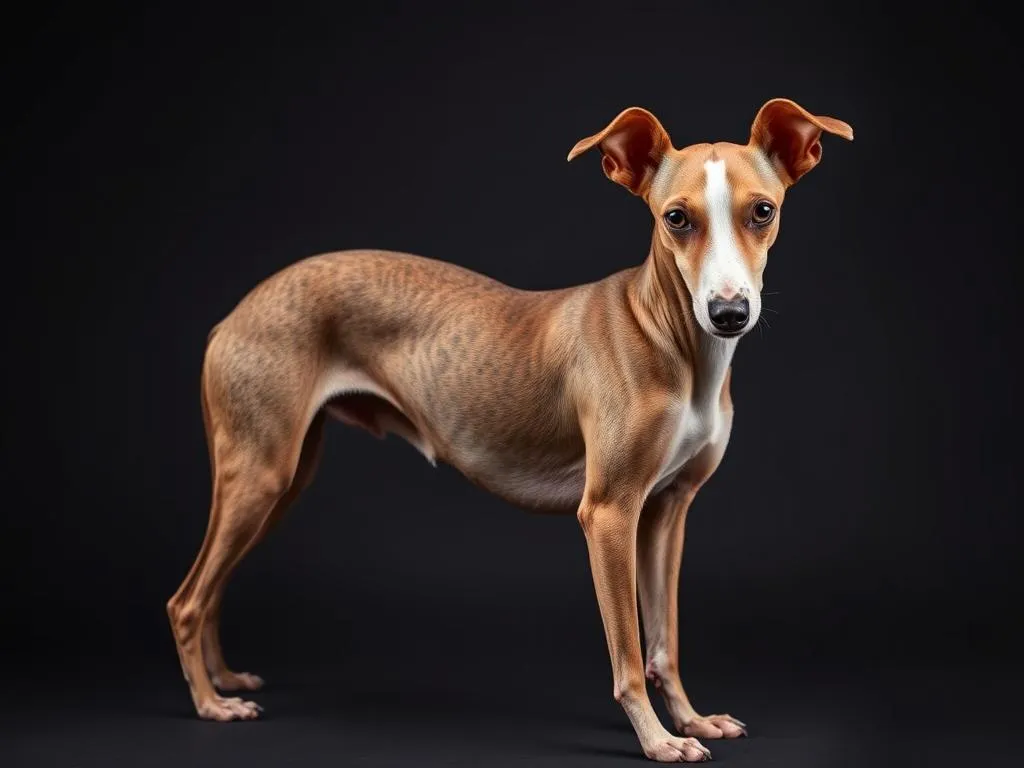
Introduction
When we talk about skinny dog breeds, we refer to those canines that possess a slender, lean physique. These dogs typically have a lighter bone structure and less body fat than their bulkier counterparts, which gives them a distinct appearance. Understanding the characteristics and needs of skinny dog breeds is essential for potential dog owners, breeders, and enthusiasts alike, as it helps in providing the best care and environment for these unique animals.
The purpose of this article is to inform readers about various skinny dog breeds, providing insights into their care, health, and lifestyle. Whether you are considering adopting a dog or simply want to learn more about these breeds, this guide aims to deliver valuable information tailored to your needs.
Characteristics of Skinny Dog Breeds
Physical Traits
Skinny dog breeds vary in size, but they generally share common physical features. Most skinny breeds are characterized by:
- Height and Weight: They typically range from small to medium sizes, often weighing between 5 to 50 pounds. For example, Chihuahuas usually weigh around 2 to 6 pounds, while Greyhounds can weigh between 60 to 70 pounds but are known for their lean build.
- Body Structure: Slender limbs, elongated necks, and a defined waist are common traits. This physicality aids in their speed and agility, which is particularly notable in breeds like the Greyhound and Whippet.
Temperament and Behavior
The temperament of skinny dog breeds can vary widely, but many share similar personality traits:
- Energy Levels: Many of these breeds are active and require regular exercise. For example, Greyhounds are sprinters and enjoy short bursts of high-intensity activity, while other breeds may have different exercise needs.
- Common Personality Traits: Many of these dogs are friendly, affectionate, and intelligent. They often bond closely with their human companions and may be eager to please, which makes training relatively straightforward.
Health Considerations
Skinny dog breeds may face specific health challenges, including:
- Common Health Issues: These can include hip dysplasia, heart conditions, and skin problems. Regular veterinary check-ups can help manage these issues.
- Diet and Exercise: Maintaining a balanced diet and regular exercise regimen is crucial to prevent obesity and related health concerns. It’s important to monitor their weight closely, as being underweight can also lead to health issues.
Popular Skinny Dog Breeds
Greyhound
The Greyhound is one of the most famous skinny dog breeds. Known for their incredible speed, they are gentle and affectionate companions.
- Unique Characteristics: Greyhounds have a unique body structure that allows them to run at speeds of up to 45 mph. They have a long, narrow head, deep chest, and long legs.
- Temperament: Greyhounds are often described as “couch potatoes.” Despite their athleticism, they enjoy lounging and are surprisingly calm indoors.
- Care Requirements: They require moderate exercise—a few short walks or runs each day—and a diet high in protein to maintain their muscle mass.
Whippet
Similar to the Greyhound, the Whippet is a lean breed that is both fast and agile.
- Unique Characteristics: Whippets are smaller than Greyhounds and have a graceful, streamlined body. They are known for their speed, reaching up to 35 mph.
- Temperament: Whippets are friendly and affectionate, making them excellent family pets. They are also known for being good with children and other pets.
- Care Requirements: Regular exercise is essential, but they also enjoy downtime. A balanced diet rich in nutrients supports their active lifestyle.
Italian Greyhound
The Italian Greyhound is a toy breed that embodies elegance and agility.
- Unique Characteristics: Standing at about 13-15 inches tall, they are much smaller than their Greyhound cousins. Their slender body and refined features make them quite charming.
- Temperament: These dogs are playful, affectionate, and intelligent. They enjoy being around people and can be prone to separation anxiety.
- Care Requirements: Italian Greyhounds need regular exercise but can also get sufficient activity indoors. High-quality dog food is essential to maintain their health.
Basenji
The Basenji is often called the “barkless dog,” known for its unique vocalization and slender build.
- Unique Characteristics: Basenjis have a well-defined waist and a tightly curled tail. They are small to medium-sized, weighing around 22-24 pounds.
- Temperament: They are independent and intelligent, often exhibiting cat-like behavior. Basenjis can be reserved with strangers but are loyal to their families.
- Care Requirements: They require regular exercise and mental stimulation. A high-quality diet is crucial for maintaining their slender physique.
Saluki
The Saluki is one of the oldest dog breeds, known for its grace and speed.
- Unique Characteristics: With a slender body and long legs, Salukis are built for speed. They can weigh between 40 to 65 pounds and stand between 23 to 28 inches tall.
- Temperament: Salukis are gentle and reserved, often forming strong bonds with their owners. They may be aloof with strangers.
- Care Requirements: They require plenty of exercise due to their high energy levels. A well-balanced diet helps maintain their lean build.
Chihuahua
The Chihuahua is the smallest of the skinny dog breeds, often weighing between 2 to 6 pounds.
- Unique Characteristics: Chihuahuas have a compact and slender body. Despite their small size, they have a bold personality and are often fearless.
- Temperament: They are loyal, affectionate, and can be quite vocal. Chihuahuas can be wary of strangers but are fiercely protective of their families.
- Care Requirements: Regular exercise is essential, but they can get sufficient activity indoors. A high-quality diet is necessary to avoid health issues related to being underweight.
Care and Maintenance of Skinny Dog Breeds
Dietary Needs
The dietary requirements for skinny dog breeds are critical for maintaining their health and energy levels.
- Recommended Diets: High-quality dog food rich in protein, healthy fats, and essential vitamins is crucial. Avoid fillers like corn and soy, which can lead to weight gain without providing necessary nutrients.
- Importance of Nutrition: Proper nutrition helps prevent obesity, which can be particularly dangerous for lean breeds. Regularly monitoring your dog’s weight and adjusting their diet accordingly is essential.
Exercise Requirements
Regular exercise is paramount for skinny dog breeds to keep them fit and healthy.
- Ideal Exercise Routines: Most skinny breeds benefit from daily walks, playtime, and opportunities to run in safe, open areas. Activities like agility training or flyball can also be excellent for their physical and mental stimulation.
- Benefits of Physical Activity: Regular exercise helps maintain a healthy weight, supports cardiovascular health, and promotes mental well-being.
Grooming and Hygiene
Grooming needs can vary among skinny dog breeds, but there are general practices to consider.
- Grooming Needs: Many skinny breeds have short coats that require minimal grooming. Regular brushing helps remove loose hair and dirt.
- Dental Care: Dental hygiene is crucial, as small breeds like Chihuahuas are prone to dental issues. Regular teeth brushing and dental chews can help maintain oral health.
Health Issues Common in Skinny Dog Breeds
Genetic Health Problems
Like all breeds, skinny dog breeds can be prone to certain genetic health problems.
- Hereditary Conditions: Some breeds, like Greyhounds, may be susceptible to specific conditions such as hip dysplasia or heart disease. Regular health screenings can help identify potential issues early.
- Importance of Check-ups: Regular veterinary visits allow for early detection and management of health problems, ensuring a longer, healthier life.
Skin and Weight Issues
Skin and weight management are particularly important for skinny dog breeds.
- Common Skin Conditions: These breeds can be prone to skin allergies and conditions due to their thin skin. Regular grooming and skin checks can help catch issues early.
- Managing Weight: Maintaining a healthy weight is crucial. Owners should monitor their dog’s body condition and consult with a vet if weight fluctuations occur.
Preventive Care
Preventive care is vital for the overall health of skinny dog breeds.
- Vaccinations: Keeping up with vaccinations helps protect against common diseases. Regular vet visits are essential for this.
- Recommended Practices: Maintaining a regular schedule for check-ups, dental care, and vaccinations ensures your dog remains healthy throughout their life.
Finding the Right Skinny Dog for You
Factors to Consider Before Adopting
When considering a skinny dog breed, several factors should be taken into account:
- Lifestyle Compatibility: Evaluate your activity levels and home environment. Many skinny dog breeds require active lifestyles and plenty of engagement.
- Space and Environment: Ensure your living situation can accommodate the exercise needs of the breed you are considering.
Adoption vs. Breeding
Deciding whether to adopt or buy from a breeder involves weighing the pros and cons.
- Adoption Benefits: Adopting from shelters can provide a loving home to a dog in need. Many mixed-breed dogs also exhibit the desired traits of skinny dog breeds.
- Breeder Considerations: If choosing to buy from a breeder, ensure they are reputable and prioritize the health and well-being of their dogs.
Training and Socialization
Training and socialization are crucial for all dogs, especially skinny breeds.
- Importance of Training: Early training helps establish good behavior and strengthens the bond between you and your dog. Positive reinforcement methods work best.
- Socialization Tips: Expose your dog to different environments, people, and other pets to help them become well-adjusted adults.
Conclusion
In summary, understanding skinny dog breeds involves recognizing their unique characteristics, care needs, and potential health issues. From the elegant Greyhound to the spirited Chihuahua, each breed has its own charm and requirements.
As a potential dog owner, it’s vital to research and ensure that you can meet the needs of these slender companions. Whether through adoption or responsible breeding, giving a home to a skinny dog breed can be a rewarding experience.
Further Exploration
For those interested in learning more about dog breeds and care, numerous resources are available, including books and reputable online platforms dedicated to canine health and training. Engaging with communities of dog owners can also offer valuable insights and support in your journey with a skinny dog breed.









